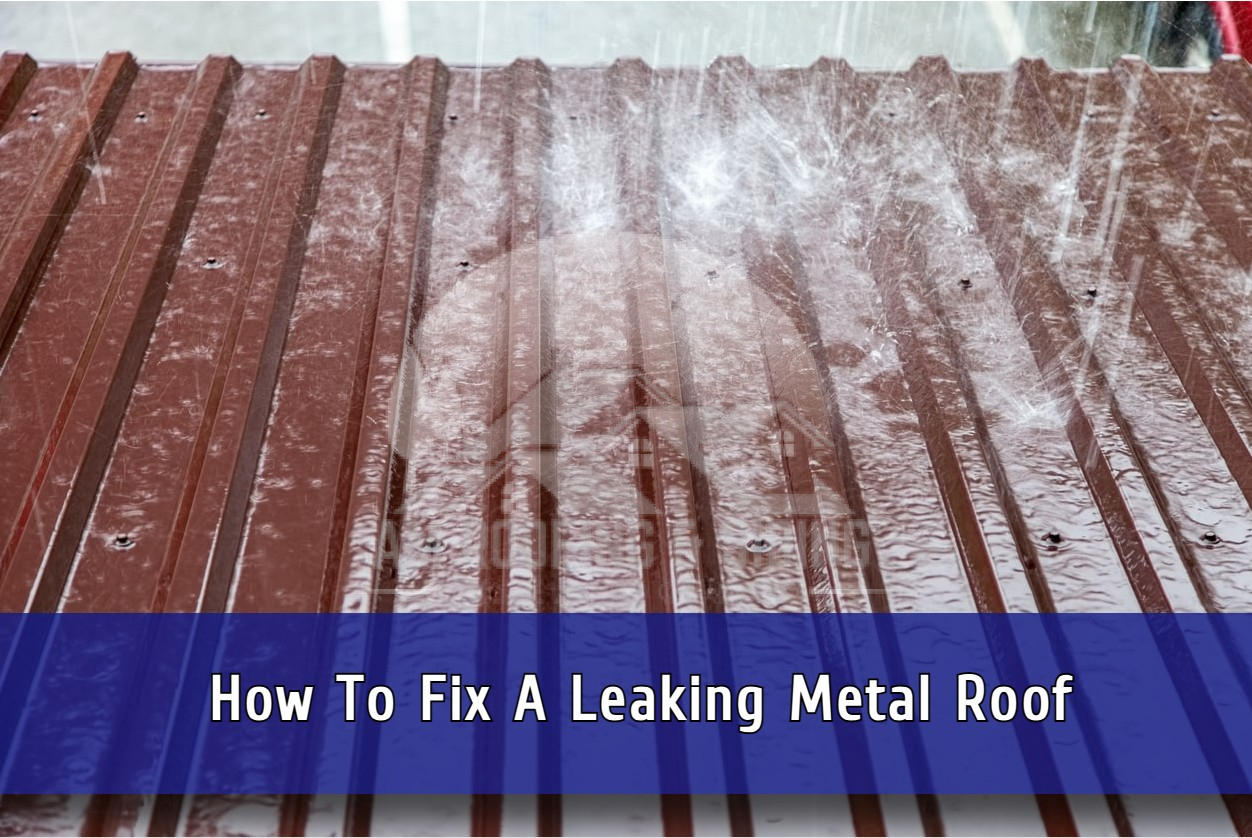Dealing with a leaking metal roof can be a distressing scenario for any homeowner or property manager. Understanding why these leaks occur and addressing them quickly is crucial to maintaining the integrity of your roofing structure. Metal roofs, known for their durability and longevity, are not immune to the challenges posed by weather and environmental conditions. Over time, issues that have developed due to rust, improper installation, and lack of maintenance can lead to vulnerable areas where water can seep through.
The importance of timely repairs cannot be overstated when it comes to sealing metal roof leaks. If left unaddressed, a small leak can lead to significant damage, including structural deterioration and mold growth inside your property. By learning how to fix a leaking metal roof, you can take proactive steps to mitigate these risks. This article offers practical guidance and metal roof repair tips, designed to equip you with the knowledge you need in order to fix a metal roof.
Whether you are facing an emergency leak or are just looking to prevent future issues, understanding the causes of metal roof leaks and how to address them effectively is the first step toward safeguarding your property from water damage.
Identifying the Source of the Leak
Before attempting any repair on your metal roof, it is essential to locate exactly where the leak is coming from. Conducting a thorough inspection is critical, especially after severe weather conditions. To safely inspect your metal roof for leaks, use a sturdy ladder or consider hiring a professional if the roof’s slope or your home’s height makes it dangerous to perform an inspection on your own.
Once you’re on your roof, start by examining common leak-prone areas such as seams, flashing around chimneys, skylights, vents, and any points where different roof surfaces meet. These areas are often exposed to water penetration due to sealant wear and tear or the breakdown of the metal flashing itself. During the inspection you should also keep an eye out for rust, cracked sealant, or any gaps that might allow water to seep through.
Utilizing these tips to pinpoint the exact location of a leak can save time and ensure that your efforts in sealing the metal roof leaks are effective. Remember, correctly identifying the source is the first step in any successful metal roof repair project. Armed with this knowledge, you can confidently proceed with your DIY repairs, ensuring a watertight and durable roof over your head.
Preparing For The Repair
Gathering the right tools for metal roof repair is crucial to ensure the job is done efficiently and safely. Before you begin any type of metal roof repair, you should have a well-stocked toolkit. Essential tools for metal roof repair include a drill, screws, a sealant gun, metal snips, and a tape measure. Additionally, materials such as sealants and patches specifically designed for metal roofs are necessary in order to address sealing metal roof leaks effectively.
Safety is essential when working on any roof, especially metal ones, which can be particularly slippery. To ensure safety, it’s important to wear non-slip shoes, use safety harnesses, and have someone nearby in case of an emergency. Always check the weather forecast before starting your repair too, since you’ll want to avoid working on the roof in wet or windy conditions as these can increase the risk of accidents.
DIY Metal Roof Repair Tips
In this section, we’ll break down some of the important tips you should keep in mind when making DIY roof repairs. However, you should know that the best results occur with professional help, so if you feel unsafe, or have no prior roofing experience, ensure that you hire experts.
Once you’ve identified the source of the leak, clean the affected area thoroughly, removing any rust and debris that could interfere with the sealant’s ability to adhere to the metal surface. Use a wire brush or sandpaper to scrub the surface until it’s smooth and free of any loose materials. This preparation is crucial for the sealant to bond properly and form a watertight seal.
You’ll want to choose a high-quality sealant designed for metal roofs, such as urethane or silicone-based sealant, which are both effective in sealing metal roof leaks. Apply the sealant carefully, ensuring all gaps are covered. For larger breaches, metal patches can be applied over the area before sealing it for added security.
Once the sealant has been set, inspect the area to ensure a complete seal without any missed spots. It’s advisable to check the repaired area once it rains to confirm that the leak has been successfully sealed.
If the leak is extensive or if you can’t find the source, it may be wise to call a professional roofer. Professional roofers have the expertise and equipment to handle significant repairs safely and efficiently. They can also perform a comprehensive check to identify any underlying issues that might not be apparent to the untrained eye.
Whether you decide to tackle the repair yourself or hire a professional, addressing leaks promptly can save you from potentially high repair costs in the future. Remember, regular maintenance and inspections are key to extending the lifespan of your metal roof and ensuring it continues to protect your home effectively.
Preventing Future Leaks
Maintaining a metal roof to prevent future leaks involves regular inspections and adhering to a few key care practices. Ignoring maintenance efforts will lead to premature wear and tear, ultimately compromising the roof’s ability to protect your property.
To extend the life of your metal roof and avoid potential issues, it is crucial to perform regular inspections, especially after extreme weather events. Look for signs of damage such as loose panels, rust formation, or sealant failures. These are common causes of metal roof leaks and should be addressed promptly to prevent water from seeping into your home.
Additionally, ensure that debris and leaves are cleared from the roof’s surface and gutters. Accumulated debris can hold moisture against the surface of the roof, which not only causes corrosion but also adds unnecessary weight and stress to the roofing structure. Trimming overhanging branches can reduce the amount of debris and minimize the risk of physical damage from falling tree limbs.
It is also advisable to check and tighten fasteners and seams periodically as they can loosen over time due to thermal expansion and contraction. Using the right tools for metal roof repair, such as a torque wrench, ensures that fasteners are not overtightened or left too loose, both of which can lead to leaks.
By following these maintenance tips and integrating regular care into your routine, you can significantly enhance the durability of your metal roof and prevent future leaks. Remember, if you are unsure about performing any of these tasks safely, it is always best to contact a professional roofing contractor who can provide expert services tailored to your roofing needs.
Get Expert Help From AM Roofing And Siding
We have explored various effective methods and tips in this blog post on how to fix a leaking metal roof, emphasizing the significance of addressing these issues promptly to prevent extensive damage. To recap, identifying the source of the leak, properly preparing the repair area, and using the correct tools and materials are all crucial steps in a successful metal roof repair process.
Don’t let a leaking metal roof cause further damage to your property. Trust the experienced team at AM Roofing and Siding to provide professional metal roof repair services. Call us now at (740) 974-8268 for a prompt assessment and reliable solutions. Protect your investment with our proven expertise in sealing metal roof leaks and ensuring long-lasting fixes. Our skilled professionals are equipped with the right tools for metal roof repair and can address the root causes of leaks efficiently. Don’t wait until the problem escalates, take action today and secure your metal roof.

